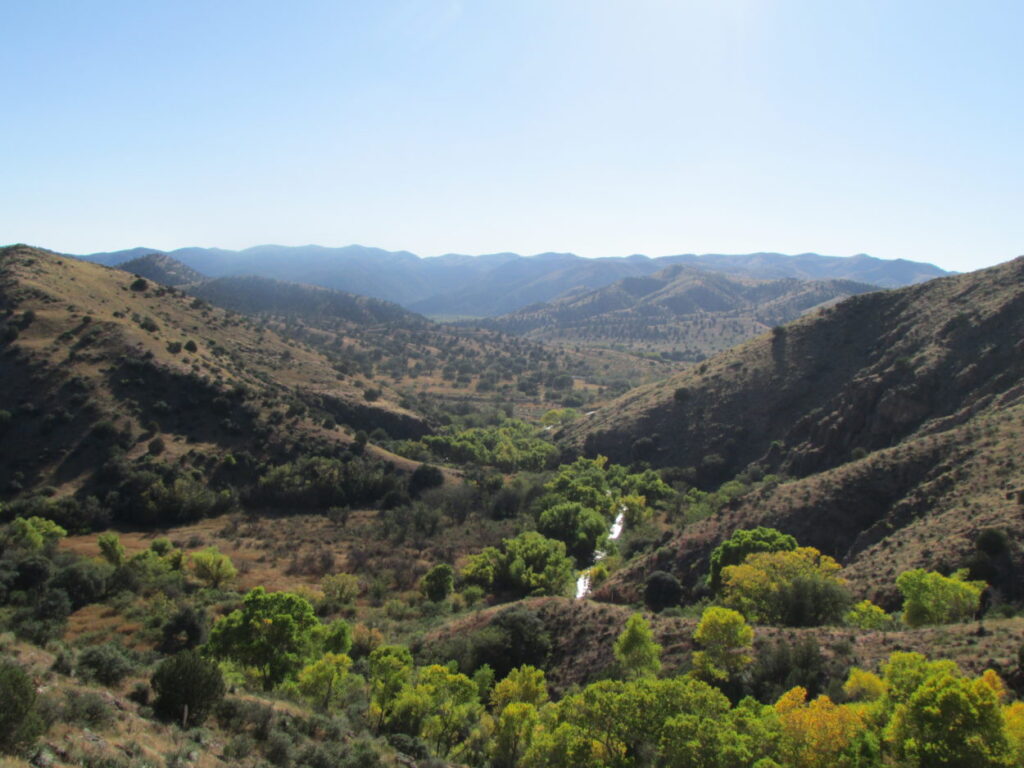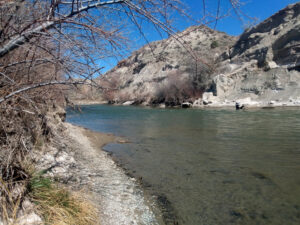ISC mulls water projects after diversion project scrapped
6 min read
The Interstate Stream Commission (ISC) is considering how to move forward on several water infrastructure projects — and future coordination with the New Mexico Central Arizona (NM CAP) Entity — now that the Gila River diversion project is no longer viable.
Rolf Schmidt-Petersen, director of the Interstate Stream Commission, provided state lawmakers with an update on the Gila River diversion project last week after the New Mexico Central Arizona Project (NM CAP) Entity lost access to key funding.
After the project fell more than a year behind schedule, the U.S. Department of Interior dealt a major blow to the project in December 2019 when it denied the NM CAP Entity’s request for an extension on the deadline for filing documents to support its application for up to $56 million in construction funding for the project that’s available under the Arizona Water Settlement Act of 2004 (AWSA).
The NM CAP Entity had until the end of December 2019 to complete the necessary environment impact statements and receive a federal Record of Decision. The U.S. Bureau of Reclamation and the Interstate Stream Commission finally released a draft environmental impact statement for the project in April 2020, after a series of revisions to its scope.
RELATED: After a long battle, the Gila River Diversion project comes to an end
The draft EIS carried a price tag of $3.7 million. But in June, the Interstate Stream Commission (ISC) voted 7-2 against supplying the U.S Bureau of Reclamation an additional $635,000 in funding needed to complete the EIS and reach a federal Record of Notice. The money would have come from the New Mexico Unit Fund, which the ISC administers under the AWSA.
That vote, Schmidt-Petersen told the interim Water and Natural Resources Committee on August 6, was partially in response to comments made by the Bureau of Reclamation that “from Reclamation’s perspective, unless they were provided all the necessary funding for completing the NEPA process, they would not be able to proceed.”
“That letter indicated that the Secretary of Interior and their office was leaning towards a no-action alternative in that NEPA process,” Schmidt-Petersen said. “[The commission] felt like there was not a path forward for the commission to take, given costs and a number of other issues, and they specifically referenced the letter from the Department of Interior, the statement really that if that $635,000 was spent it might just go to a no action, so what value would that provide?”
Without the final funds for completing the EIS, the project cannot move forward. But the EIS could still be completed at a later date if the group can find funding for it. Schmidt-Petersen emphasized the ISC vote only pertained to the $635,000 requested by the Bureau of Reclamation.
“I want to make clear that the commission did not make a decision about Reclamation’s independent responsibilities and they also made it clear they weren’t altering New Mexico’s entitlement of up to 14,000 acre feet of water under the AWSA,” he said.
‘Failure to perform’
After the ISC’s funding vote, the NM CAP Entity disputed the ISC’s action, alleging that the commission failed to follow protocol established in the AWSA, among other things. The Entity formally initiated a dispute resolution process in July.
State Rep. Matthew McQueen, D-Santa Fe, expressed frustration with the dispute resolution at the Water and Natural Resources interim committee meeting.
“My sense is that the NM CAP Entity has really failed to perform, and it’s time to start fresh,” McQueen said. “I’m really frustrated that now we’re in this dispute resolution process with a body that isn’t representative of the communities down there. I think it’s time to scrap it. If we’re really required to coordinate with the Southwest New Mexico Water Study Group, let’s start a new southwest water study group. How about we get a new successor.”
Schmidt-Petersen hinted that starting fresh isn’t really an option, as the ISC doesn’t have any authority over who makes up the NM CAP Entity.
“We didn’t have any part in creating that group, it was really set up by Congress,” he said, adding that tensions between the different parties have long existed. “This project has been one where every party has talked about litigation and the ability to litigate and every alternative that we were putting forward to our commission had some form of litigation associated with it. My direction is to abide by the JPA and the federal statute and try to find ways to move forward with that.”
Rep. Gail Armstrong, R-Magdalena, was a lone voice in expressing support for future projects targeting access to the 14,000 acre-feet at stake in the future.
“I’m hoping that now, with Mr. Schmidt-Petersen involved, this will move forward quickly and not take another ten years for us to do something about these 14,000 acre feet flowing into Arizona swimming pools. I’m hoping we can get something done.”
Modifying the Joint Powers Agreement
There are plenty of other “non-Unit” water issues that need to be addressed in the southwest region of the state, Schmidt-Petersen said, some of which might benefit from further coordination with the NM CAP Entity. The ISC is now looking at how to amend the Joint Powers Agreement it has with the NM CAP Entity in order to move forward with non-Unit projects.
Schmidt-Petersen pointed to the Hurley water project, a proposal to supply the town of Hurley, located in Grant County, with new water wells. The project has the potential to develop into a regional water system that a number of cities, including Silver City, could benefit from. But after millions were spent in drilling exploratory wells that were unable to perform as expected, Schmidt-Petersen said the project doesn’t have a clear path forward.
“We’re working and talking with the project proponents, really trying to assess what we could do next to help that project to be successful,” Schmidt-Petersen said.
Other projects include the possibility of adding more environmentally friendly diversions in the Gila and San Francisco valleys to help support farmers in the area; working with the Gila Basin Irrigation Commission on installing a new diversion dam in that area; and taking “a hard look” at the Virden Valley, where the farmers in that area are threatened by pending litigation in Arizona under the 1935 Globe Equity Decree, a federal consent decree governing Gila River water distribution among stakeholders and indigenous nations in Arizona.
“The worry is their ability to pump groundwater would be very limited, that would potentially be very detrimental to their ability to farm,” Schmidt-Petersen said.
Rep. Nathan Small, D-Las Cruces, raised concerns about funding for these projects, and said he wants to see funding currently available to the state be earmarked for water projects in the southwest region of the state, including in Grant, Luna, Hidalgo and Catron counties.
“Knowing that we’re heading into an extremely challenging budget situation…there is going to be extreme competition for water project funding,” Small said, pointing to the lack of water infrastructure in the northwest part of the state.
“I think it will be incredibly unfair and unacceptable if we’re not using those funds for projects in the four county area — that residents of the four county area desperately need — and instead making residents from the four county area compete with residents across New Mexico for scarce water project funds,” Small added.
Schimdt-Petersen said the ISC has similar concerns.
“The nature of the AWSA is that there are a number of requirements we need to go through relative to the joint powers agreement, but also in compliance with the federal statute,” Schmidt-Petersen said. “We have to coordinate with the Southwest New Mexico Water Study Group and the New Mexico CAP Entity, who is their successor, in order to achieve the goals you’ve outlined — which are ours also.”
The article was published at ISC mulls water projects after diversion project scrapped.






